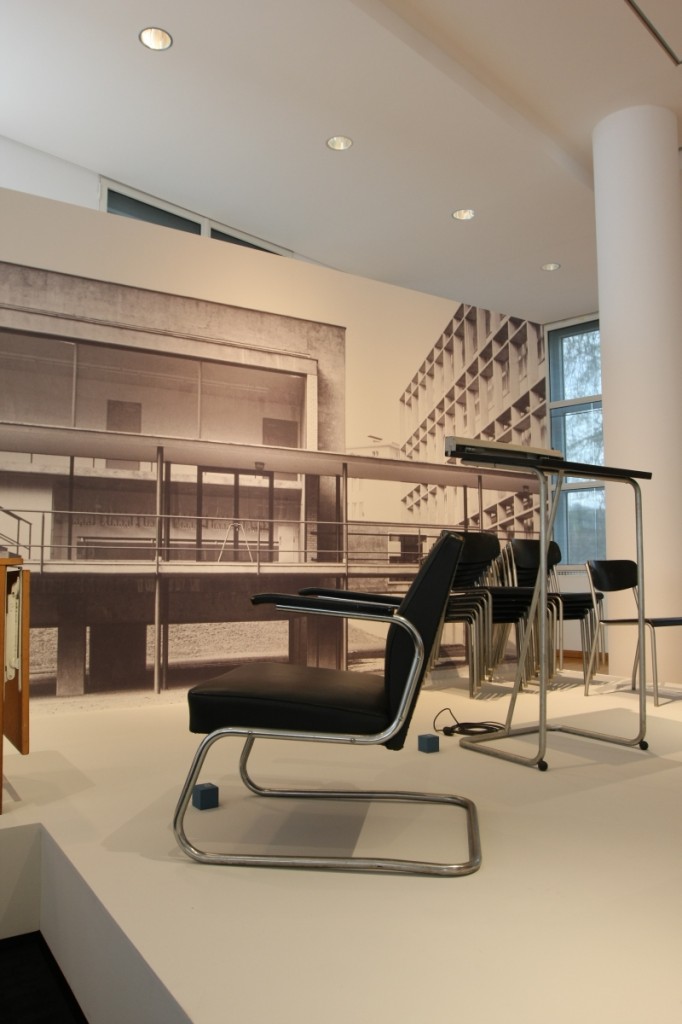If we were to be completely honest we would have to admit that although we were aware of the name “Ferdinand Kramer”, it wasn’t until Frankfurt based manufacturer e15 launched a series of Kramer re-editions at Milan 2012 that we actually paid any serious attention to the man and his work.
Something we are very thankful for.
Born in Frankfurt in 1898 Ferdinand Kramer undertook a foundation architecture course in Munich before joining Bauhaus Weimar in 1919. Disillusioned by the lack of a formal architecture course at Bauhaus, Kramer returned to the Technical University Munich from where he graduated in 1922. In 1925 Kramer began a position in Frankfurt in the office of the city’s then Building Director Ernst May, a position which brought him into the heart of the “Neues Frankfurt” urban regeneration and house building programme: after the Weissenhofsiedlung arguably the most important Modernist architecture project realised in Germany. If not Europe.
Under the Nazi dictatorship Ferdinand Kramer, as an acknowledged Modernist, was banned from working as an architect, and so in 1938 he emigrated to America where over the next decade and a half he developed and realised numerous architecture, interior design and product design projects. In 1952 Kramer was invited to take up the position of Buildings Director of the Johann Wolfgang Goethe University in his native Frankfurt. A position that largely involved re-building the war damaged institution, and a position Kramer immediately accepted and which he held until his retirement in 1964. Ferdinand Kramer died in Frankfurt on November 4th 1985.
In addition to buildings Ferdinand Kramer also designed furniture, fixtures and fittings – often for his buildings, though not exclusively – and this aspect of Kramer’s oeuvre forms the principle focus of the exhibition “The Kramer Principle: Design for Variable Use” currently showing at the Museum Angewandte Kunst in Frankfurt am Main.
Divided into three chronological sections covering the three major periods in Kramer’s life and career – 1924-1938 in Frankfurt, 1938-1952 in America and 1952-1985 in Frankfurt – The Kramer Principle presents some 115 objects including chairs, tables, wood burning stoves, umbrellas and examples of Kramer’s numerous furniture systems.
If we were to continue the streak of honesty with which we began this post, we would have to say that The Kramer Principle isn’t the sort of exhibition you will leave with a feeling of having, necessarily, learnt more about Ferdinand Kramer. And, at least for us, the exhibition doesn’t live up to its billing of being a “comprehensive retrospective”
For that the objects are presented too lifelessly. Far too uncritically.
It is however an excellent introduction to the design work of a man who helped develop many concepts of furniture design that continue to dominate the industry today, including for example, modular furniture systems and in-store sales systems.
In addition The Kramer Principle offers a nice insight into the ideals of 1920s German social design as represented by Kramer’s furniture designs for “Neues Frankfurt” and is an opportunity to enjoy some truly delightful, thought provoking, and rarely seen, design objects including, Kramer’s B 403 bentwood chair for Thonet, an undated prototype for an upholstered cantilever chair and the deliciously simple “Three-in-one” combined extendible stool/side table from 1942.
And so while the exhibition may not live up to its aims, it is well worth viewing.
The Kramer Principle: Design for Variable Use is on show at the Museum Angewandte Kunst, Schaumainkai 17, 60594 Frankfurt am Main until Sunday September 7th 2014.
Full details can be found at www.museumangewandtekunst.de
